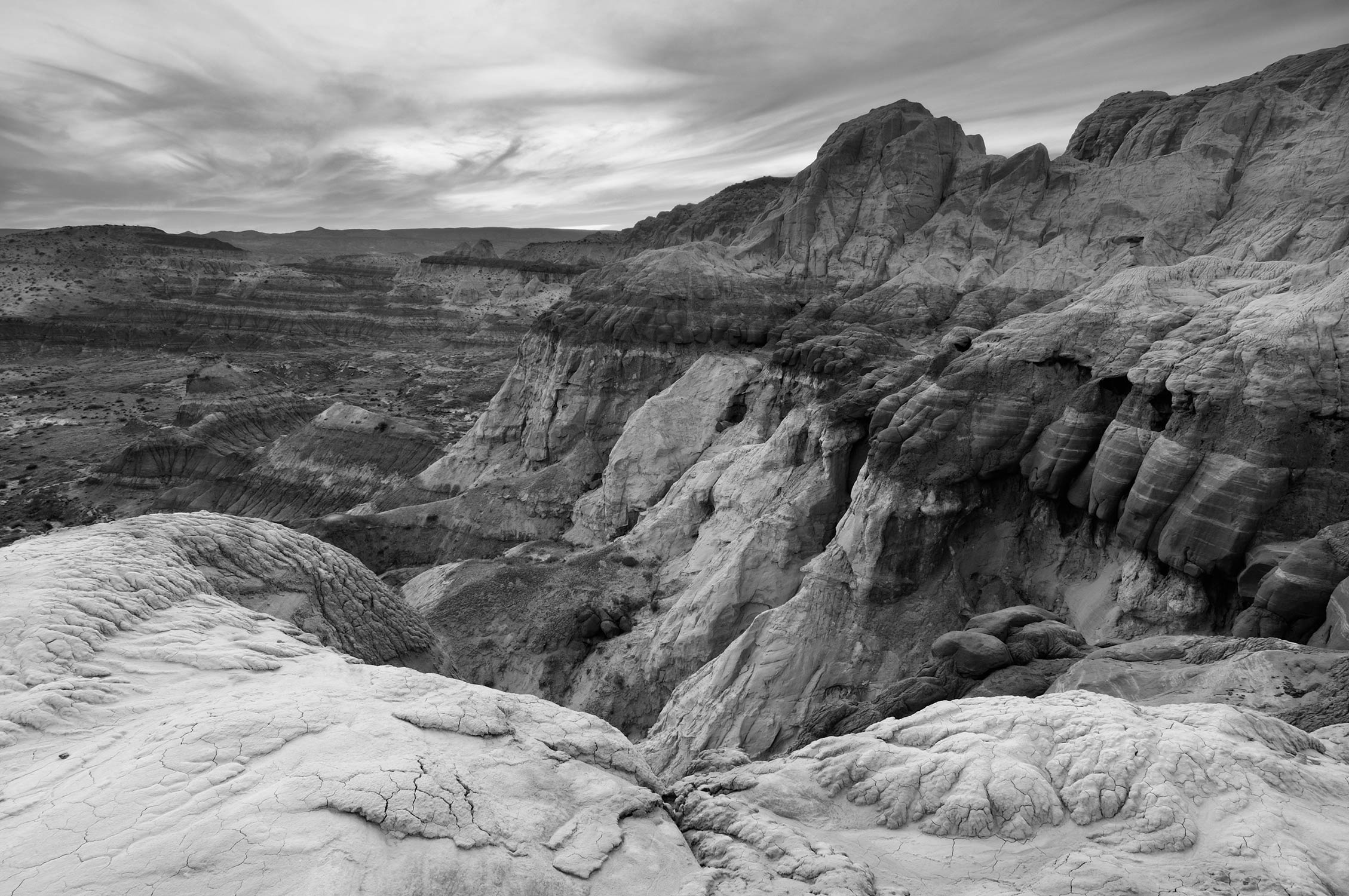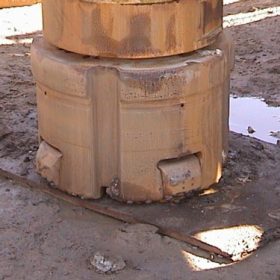
| Application | Construction of Sea Water Intake Channel |
|---|---|
| Location | Jurong Island, Singapore |
| Hammer | Champion 240 Hammers |
| Bit | Super Jaws® T560 Overburden Bit |
| Hole Size | Casing Size - 24 inch (610 mm), 1/2" (12.7 mm) wall |
| Depth or Length | 59 feet (18 m) |
| Formation | Reclamation sand, granite boulders, sticky marine clay |
| Rig Type | Nissha DH308-85M and (3) IR 900 CFM/350 PSIG Compressors |
Description
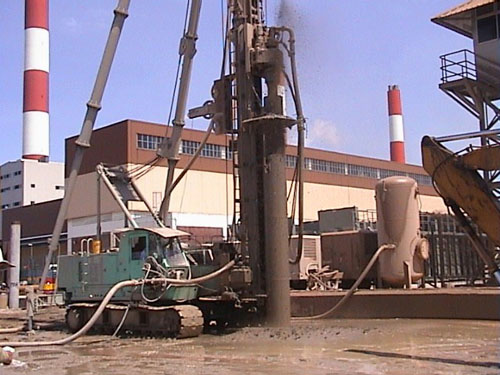 Singapore Power awarded Siemens/Samsung Engineering & Construction JV a S$600 million project to build a 740 MW (2 x 370MW) power station extension. A temporary coffer dam sheet pile wall, plus two permanent sheetpile lines were required to allow construction of a seawater intake channel. In this reclaimed area on Jurong Island, hard rock was unexpectedly encountered at approximately 26 to 30 feet (8 – 9m) below ground level, preventing driving of the sheet piles. The options were: drill a slot through the rock, or mobilize a large dredge and remove the total obstruction by grab, at very high cost.
Singapore Power awarded Siemens/Samsung Engineering & Construction JV a S$600 million project to build a 740 MW (2 x 370MW) power station extension. A temporary coffer dam sheet pile wall, plus two permanent sheetpile lines were required to allow construction of a seawater intake channel. In this reclaimed area on Jurong Island, hard rock was unexpectedly encountered at approximately 26 to 30 feet (8 – 9m) below ground level, preventing driving of the sheet piles. The options were: drill a slot through the rock, or mobilize a large dredge and remove the total obstruction by grab, at very high cost.
A DTH under reaming proposal was submitted to the customer to drill a secant slot through the obstruction; filling each hole with 3/4″ (19mm) crushed stone as the casing is removed, to hold back the granite boulders and cobbles, allowing the sheetpiles to be driven through the crushed stone.
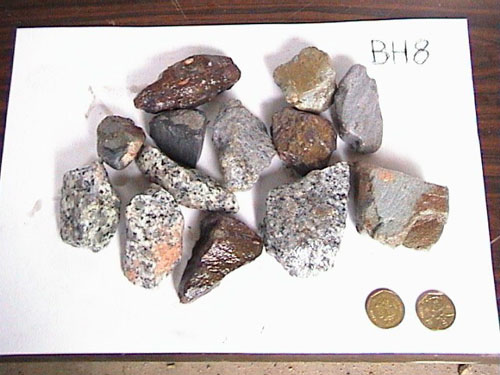 Siemens/Samsung accepted the DTH under reaming method and secured the product from THL Foundation Equipment Pte. Ltd in Singapore. The main equipment consisted of the following: NISSHA DH308-85M tripodal leader type drill rig set up for drilling 59′ (18m) single pass. Eurodrill RH5000 rotator, rated 5 T.m. 59′ (18m) of drill pipe sleeved to 20″ (508mm). The two bottom 9′ (3m) pipes were filled with concrete to give adequate weight on bit. Numa Champion 240 hammer with T560 Super Jaws® under reaming system. 24″ (610mm) casing, 1/2″ (12.7mm) wall. 3 x 900/350 I-R compressors, Sumitomo LS138RH 70T crane, IMT AF-15 hydraulic bored pile rig Kobelco SK 07 excavator with backhoe configuration, Muller MS-25H2 Vibrohammer Tecniwell tw 358 electric driven grout pump, with NISSHA NES45 generator, running at approximately 17 gals/min (65 liters/min), Schramm airline lubricator set at approximately 4.8 gals/hr (18 liters/hr), and Shell Torcula 320 rock drill oil.
Siemens/Samsung accepted the DTH under reaming method and secured the product from THL Foundation Equipment Pte. Ltd in Singapore. The main equipment consisted of the following: NISSHA DH308-85M tripodal leader type drill rig set up for drilling 59′ (18m) single pass. Eurodrill RH5000 rotator, rated 5 T.m. 59′ (18m) of drill pipe sleeved to 20″ (508mm). The two bottom 9′ (3m) pipes were filled with concrete to give adequate weight on bit. Numa Champion 240 hammer with T560 Super Jaws® under reaming system. 24″ (610mm) casing, 1/2″ (12.7mm) wall. 3 x 900/350 I-R compressors, Sumitomo LS138RH 70T crane, IMT AF-15 hydraulic bored pile rig Kobelco SK 07 excavator with backhoe configuration, Muller MS-25H2 Vibrohammer Tecniwell tw 358 electric driven grout pump, with NISSHA NES45 generator, running at approximately 17 gals/min (65 liters/min), Schramm airline lubricator set at approximately 4.8 gals/hr (18 liters/hr), and Shell Torcula 320 rock drill oil.
It was decided to drill from surface which would include drilling through sand, boulders and +/-19′ (6m) of sticky clay. After initial problems trying to drill the clay dry, a water pump was brought to site. Up to 17 gals/min (65 liters/min) of water was injected which liquefied the sticky clay. This enabled each hole to be drilled with confidence. When fresh water was unavailable, sea water was used, after which the Numa Champion 240 hammer was flushed with air and rock drill oil, then cycled a number of times to insure oxidation was limited on all internal components of the hammer.
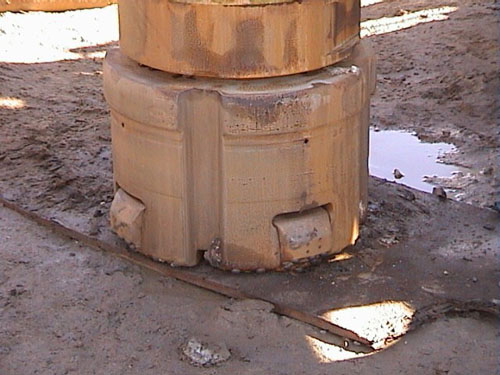 The plan was to drill in the sequence 1-3-2-5-4-7-6 and so on along the line, and fill the holes with 3/4″ (19mm) crushed stone as the casing was retracted, to hold the granite boulders back. This would enable the sheetpiles to be driven through the crushed stone. The concern was that sufficient crushed stone could be ejected while drilling the secondary holes, causing boulders or cobbles to slump into the slot. In fact, only one sheetpile refused in more than ninety holes drilled, which was easily remediated by drilling two additional holes at that location.
The plan was to drill in the sequence 1-3-2-5-4-7-6 and so on along the line, and fill the holes with 3/4″ (19mm) crushed stone as the casing was retracted, to hold the granite boulders back. This would enable the sheetpiles to be driven through the crushed stone. The concern was that sufficient crushed stone could be ejected while drilling the secondary holes, causing boulders or cobbles to slump into the slot. In fact, only one sheetpile refused in more than ninety holes drilled, which was easily remediated by drilling two additional holes at that location.
Drilling was carried out in one twelve hour shift per day. The best production was 5 x 59′ (18m) holes in a single shift while the overall average was 3+ holes in a single shift. In this project, over 90 holes were successfully drilled to an average depth of 59′ (18m).
Due to the success of this method, the contractor extended the original scope of work of drilling the temporary coffer dam sheetpile slot, to include the two permanent sheetpile lines on either side of the intake channel. The combination of the Numa Champion 240 hammer and T560 Super Jaws® under reaming bit proved to be the most effective way to tackle this challenging job.


